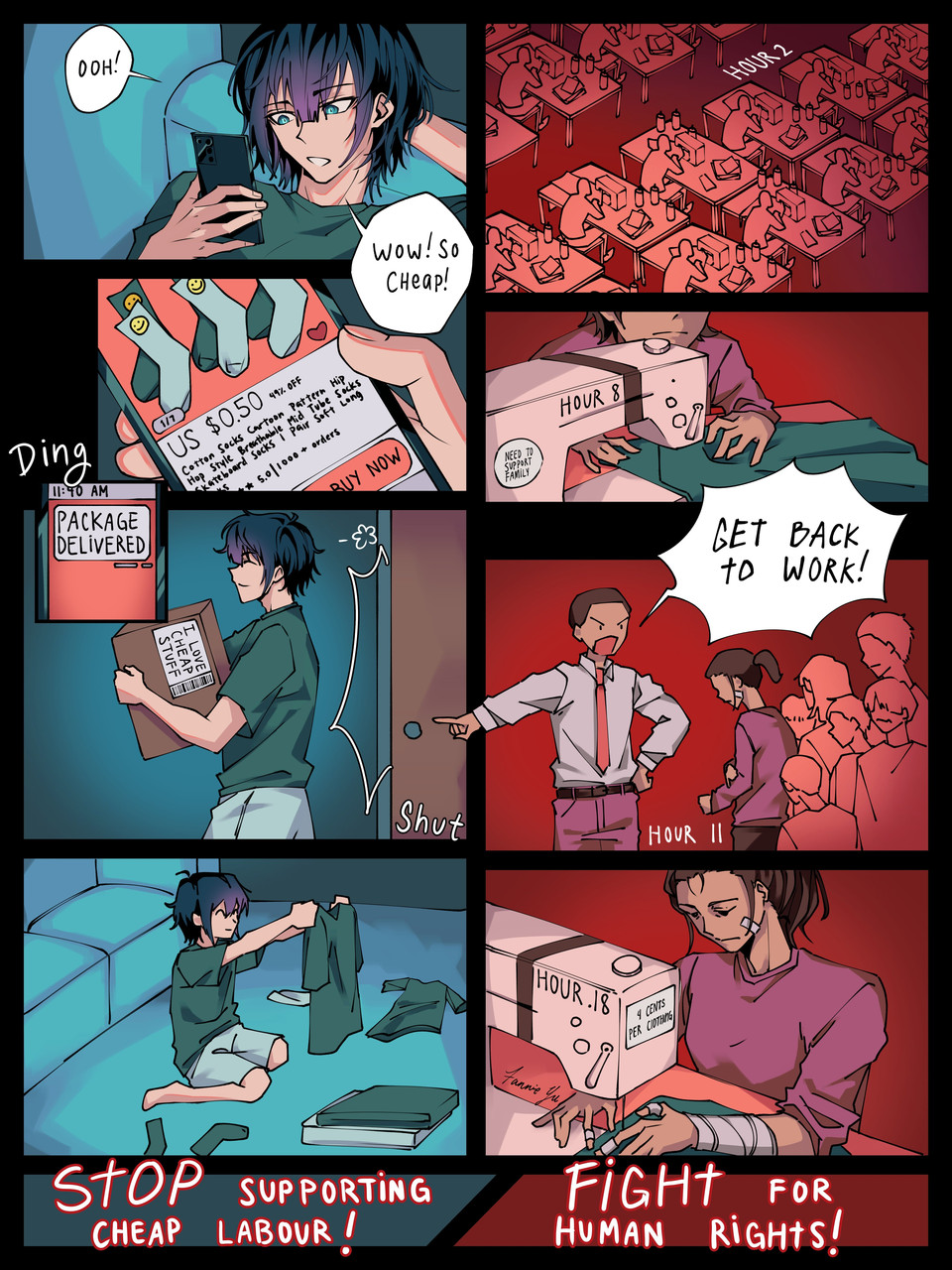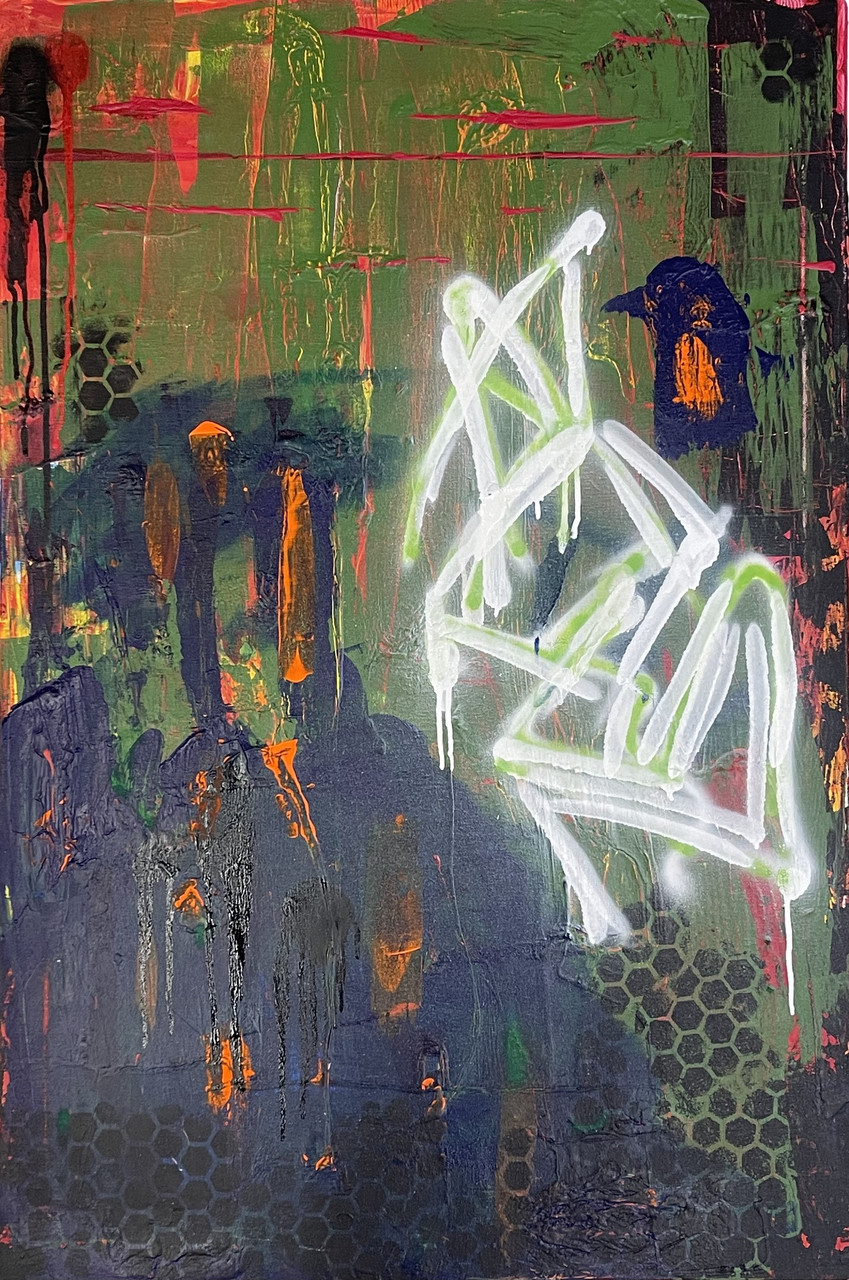Teacher Name: Adrienne Lessard
Grade: 12
Dimensions: 18” × 24”
Artist Statement: Our most recent assignment in class was to create a Socio-Political Poster. I decided to make mine about cheap labor because recently Chinese-owned online shopping platforms have become more popular than ever, especially the new TEMU app that launched last September. It has currently passed more downloads than Amazon in the United States. Even my mom has been obsessed with using the app to get free stuff and buy cheap items. Cheap shopping websites aren’t something new. Many previous platforms have existed like Wish, Alibaba, Aliexpress, SHEIN, ect. But the alarming growth of TEMU in just a few months and their continuous advertisements of EXTREMELY low priced products has raised concern in me as well as many others.
For my poster I wanted to show the viewer the two sides of cheap online shopping. As consumers, we don’t see what’s going on in the background because to us, it’s just a matter of clicking a few buttons and going about our day while waiting for the shipment to arrive. We see all these discounts and sales going on and think “What a good deal.” and buy without a thought of HOW it can be so cheap. According to OBSERVER, “Shein garment workers are paid as little as four cents per clothing item in work shifts that can last up to 18 hours” “which violated local Chinese labor laws that limit laborers to eight hours a day with a maximum of three hours overtime and a required weekly day off” After SHEIN ran their own investigation, they said the hours were “significantly less than claimed” but still more than the local regulatory limit. They did not address anything regarding workers only getting paid for the number of items they produce instead of hourly pay. The workers have no choice but to continue working with these long hours and awful factory conditions to support their families.
There have been several protests in China regarding labor conditions and in many images, the color red is used in signs because it symbolizes happiness, success, and good fortune in China which I could only hope for the workers. In contrast, the color red is also associated with hell in popular media. I wanted to emphasize the contrast between how difficult it is for the workers versus how easy we have it in comparison so I went for a color opposite red in the color wheel. The color opposite red is actually green but to make it less Christmas-y and visually appealing (because it’s an art assignment) I settled for a cyan color.
I hope that by illustrating what it is like for both consumers and factory workers, the viewer will be made aware of the cheap labor issues in their beloved “good deals” apps.



